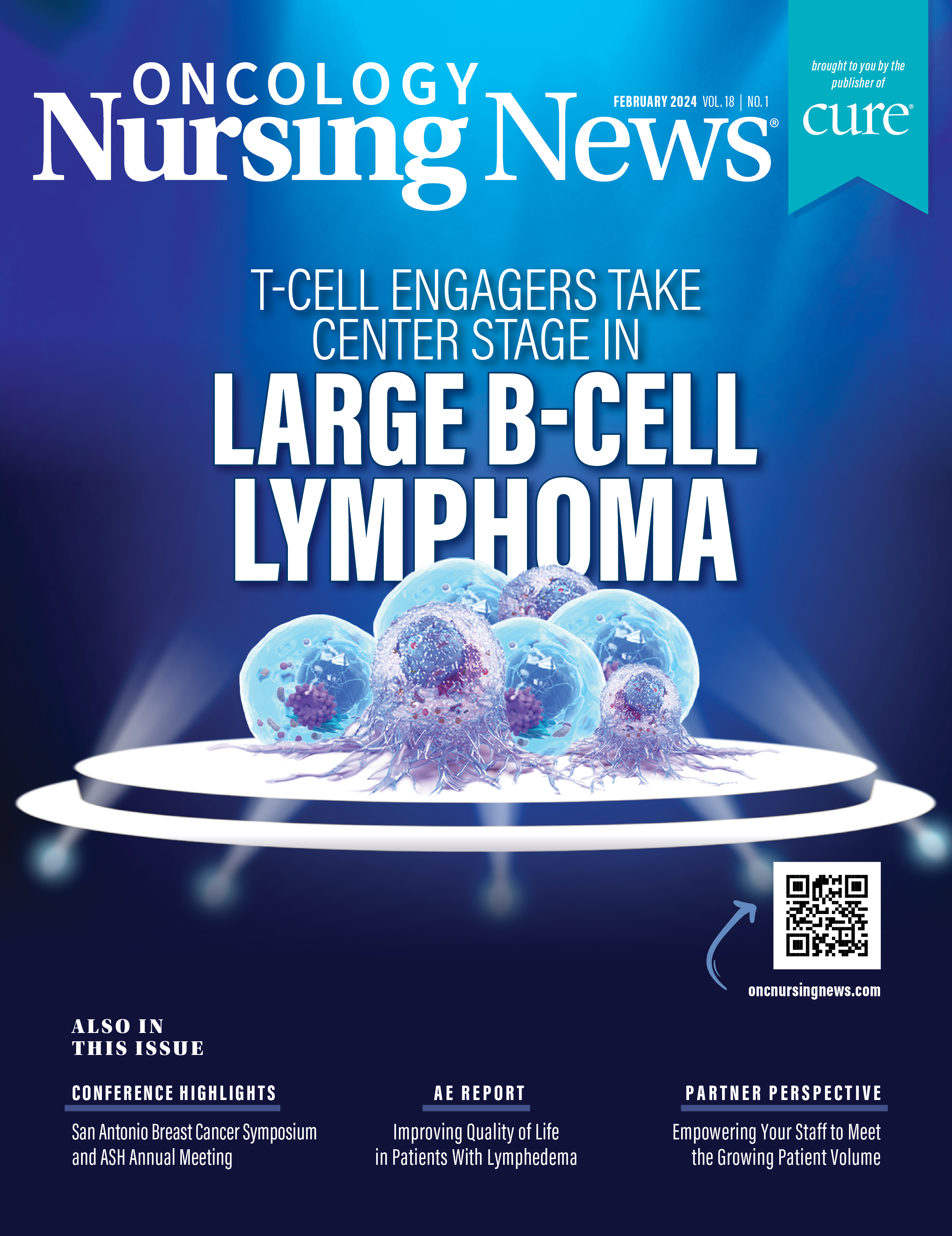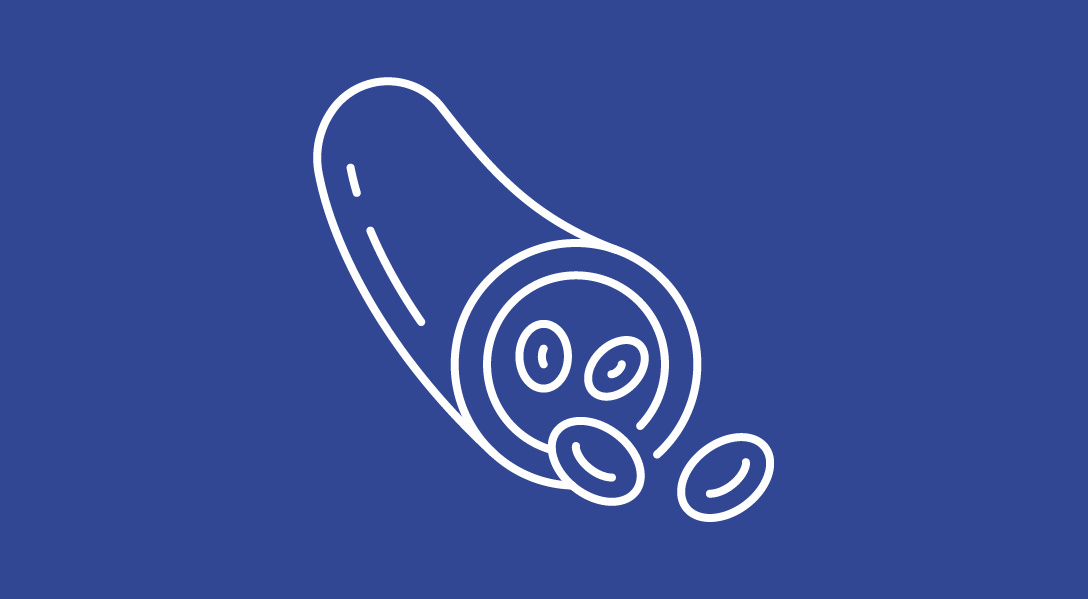Navigating Difficult Conversations in Cancer Pain Management
Difficult conversations in cancer pain management should include core values and principles, setting realistic expectations, and building the patient-client relationship from the very beginning.
Young tired manager sitting in restaurant surrounded with papers and laptop computer having tired look holding his hand on neck having pain closing his eyes being sleepy and exhausted. Tiredness: © Wayhome Studio - stock.adobe.com

The ability to navigate difficult conversations is an important skill for cancer clinicians, especially when addressing pain and concerns about substance misuse. These challenging discussions pose a unique challenge to health care professionals given the nature of the disease and dynamics of a cancer diagnosis and treatment processes. However, a review of the literature informs substance use rates of 2% to 35% with a median opioid rate of 18% in patients diagnosed with cancer.1
Individuals with cancer may use substances to cope with psychological distress or poorly controlled physical symptoms, which may lead to comorbidities negatively impacting cancer care such as compromised treatment adherence, infections, decreased immune function, and negative quality of life.1
In the setting of cancer pain management, difficult conversations may include substance use concerns, opioid prescriptions, inconsistent urine toxicology test results, behavioral health concerns, aggressive behaviors, changes to a pain regimen, or general strain in developing therapeutic relationships with patients with cancer. Having these difficult conversations requires time and empathy, both of which necessitate health care professional development.
Existing evidence guides person-centered communication and shared decision-making, which may improve a patient’s satisfaction with medical care, understanding, recall, and follow-through with the treatment plan and outcomes.2 Within pain management and cancer care, it is critical for patients to remain adherent to the treatment plan, as this is likely to yield the best potential analgesic outcomes.
Given the impact of difficult conversations in cancer pain management, it is important to ensure proper training for clinicians who will be conducting these conversations. Specifically, although difficult conversations may generate negative feelings of guilt, tension, or frustration, employing appropriate strategies and educational materials to discuss therapy changes potentially can drive positive conversations.3 Navigating change may include approaches such as demonstrating empathy and compassion, engaging in effective provider-patient communication, and utilizing motivational interviewing techniques. These key elements pave a path to positive clinical outcomes.3
Guidance for Difficult Conversations
Oregon Pain Guidance offers “The Art of Difficult Conversations,” a comprehensive guide to assist clinicians in navigating difficult conversations with patients, specific to the area of chronic pain. Prior to engaging in difficult conversations, clinicians should reflect on core values and principles such as aligning with their team’s policies and procedures, medical board, and/or state prescribing guidelines.4 When a clinician is aware of core values and principles and feels confident change is in the patient’s best interests, these conversations are more manageable and rewarding.4
Next, it is important to set realistic expectations. It is a natural reaction and part of the patient’s therapeutic process to become angry, sad, or distressed after being asked to do something they may not want to do. It is a positive step toward the individual’s overall health and well being.4
Difficult conversations may be uncomfortable not only for the patient but also for the clinician. Clinicians should identify which types of patients and situations are challenging, then develop an intervention strategy to identify discomfort and proceed calmly and effectively when delivering effective patient care.4 An example would be working with the team for support with a difficult patient or seeking psychology or staff resiliency services for support. It is OK to be uncomfortable having these conversations.4
Clinicians should not underestimate the importance of building the patient-clinician relationship and developing a rapport from the beginning. Patients often fear abandonment, not being heard, or being “fired” from the practice. Clinicians should be proactive, acknowledge that the fear is real, and genuinely communicate that the ultimate goal is improved quality of life and patient outcomes.4
Finally, clinicians can be their patients’ biggest advocates by expressing belief in the patients’ ability to modify behaviors. They should be redundant and overtly tell the patient they believe in them over several appointments; this is critical to the success of the process.4 These conversations take time and are an ongoing process.
An additional resource, “Flip the Script” from the Minnesota Department of Human Services, provides a comprehensive discussion guide to support navigating difficult conversations with patients who have chronic symptoms. This guide emphasizes the importance of validating a patient’s feelings and demonstrating empathy, but also taking the time to provide patient education regarding the plan of care, including opioid therapy, etiology of different symptoms, and differing treatment plans depending on the diagnosis.5 Included in patient education is the importance of patient safety with medication prescriptions and use. It is essential to focus on patient safety and assessing risk, especially if patients make desperate or threatening statements, then to readdress concerns and educate or refer for further support as necessary.5
Further, clinicians should utilize education to guide responses when addressing common patient rebuttals to challenging scenarios, while also being aware of one’s tone and body language to ensure empathy is not only communicated but also displayed.5
Case Study
To highlight the importance of navigating difficult conversations in cancer care, consider the case of a middle-aged woman with a history of chondrosarcoma of the thoracic spine. She initially was found to have a spinal mass after developing numbness and weakness following a motor vehicle accident. This patient has a history of 2 spine surgeries and was referred to the pain management clinic for support for her postoperative pain symptoms in the setting of a history of opioid abuse and prior buprenorphine-naloxone therapy. She also has a history of cocaine use, greater than a 30-year history of taking prescription pain medications “for her own reasons,” and she had consumed a marijuana brownie prior to surgery. The patient was not referred to the pain management clinic preoperatively, her buprenorphine-naloxone was discontinued at the time of her surgery, and she was started on methadone postoperatively with a short-acting opioid to use as needed.
In the pain clinic, her methadone was titrated for pain support with discontinuation of the short-acting opioid, with the plan to transition her back to her addictionologist once her dose was minimal to resume her buprenorphine-naloxone therapy. She was started on gabapentin for adjuvant pain support, and a screening urine toxicology test was obtained. At the initial visit, she admitted to taking extra methadone due to increased pain symptoms.
Review of the patient’s initial urine toxicology test displayed consistent results; however, 3 to 4 weeks postoperatively, she developed increased thoracic back pain with neurological deficits and was found to have significant recurrence. At the time she was offered palliative radiation vs hospice care. Due to the nature of her disease, the pain clinic provided a 7-day supply of a short-acting opioid for the management of acute pain.
Shortly thereafter, the patient called the clinic and admitted to self-adjusting her short-acting opioid due to increased pain, stating she was taking 6 or 7 doses of medication instead of the ordered 4 doses per 24-hour period. She declined admission to the hospital for pain crisis but did accept a hospice informational referral. To address her pain concerns, her methadone dose was increased, and her short-acting opioid was continued; however, the supplies were limited to 7 days in duration and strict education was provided not to self-adjust medications.
This patient ultimately completed palliative radiation but then developed a stage 3 decubitus ulcer. With the decubitus ulcer came increased pain, which required titration of her methadone dose and continued short courses of short-acting opioids for pain support. The patient ultimately accepted hospice at the time of her last pain clinic visit and died 12 days after this visit.
Communication and Collaboration
This case study highlights how patients with cancer at high risk for misuse may be treated safely and effectively with opioid pain medications, keeping in mind the importance of ensuring appropriate communication throughout the caregiving relationship. This patient was initially concerned about being treated as a “drug abuser,” but over the course of her treatment developed an excellent rapport with the pain clinic. She was open about her history and concerns at her initial visit. Mutual trust was developed, with ongoing open communication, empathy, and support. Medications were provided in short intervals with close follow-up by way of phone calls and clinic visits, and there was ongoing education throughout the process.
There was also a significant amount of collaboration between the pain management team and neurosurgery team of nurse practitioners and nurse coordinators to ensure coordination of care, goals of care, and transition to hospice. Multidisciplinary care for complex symptom management in patients with cancer is critical to success.
Fostering Patient Relationships
Pain is one of the most common symptoms associated with a cancer diagnosis and the disease process. A meta-analysis revealed that pain was reported in 59% of patients undergoing cancer treatment, in 64% of patients with advanced disease, and in 33% of patients after curative treatment.6
Knowing how to effectively navigate difficult conversations in cancer pain management to facilitate appropriate and essential pain care for patients is critical. As we strive to improve pain education for future clinicians, a focus should include difficult conversations, as communication is a central part of caring for patients with cancer pain. Utilizing resources such as Oregon Pain Guidance’s “The Art of Difficult Conversations” and “Flip the Script” from the Minnesota Department of Human Services can help clinicians navigate difficult conversations specific to pain management.
As a cancer clinician, professional development in navigating difficult conversations with patients fosters a therapeutic and patient-centered relationship essential for the current health care climate.
References
- Yusufov M, Braun IM, Pirl WF. A systematic review of substance use and substance use disorders in patients with cancer. Gen Hosp Psychiatry. 2019;60:128-136. doi:10.1016/j.genhosppsych.2019.04.016
- Partnering for better chronic pain management and safer opioid use. American Institutes for Research. Accessed December 26, 2023. https://www.air.org/knowledge-hub-home
- Osis L, Caballes N. Opioids: navigating difficult conversations. Illinois Advance. Accessed December 26, 2023. https://illinoisadvance.com/materials/opioids-navigating-difficult-conversations2/
- The art of difficult conversations. Oregon Pain Guidance Group. Accessed September 18, 2023. https://www.oregonpainguidance.org/guideline/the-art-of-difficult-conversations/
- Flip the script. Minnesota Department of Human Services. Accessed September 18, 2023. https://www.opioidlibrary.org/wp-content/uploads/2019/12/MN_Discussionguide.pdf
- Swarm RA, Paice JA, Anghelescu DL, et al. Adult Cancer Pain, Version 3.2019, NCCN Clinical Practice Guidelines in Oncology. J Natl Compr Canc Netw. 2019;17(8):977-1007. doi:10.6004/jnccn.2019.0038

Nurse Practitioners Weigh in on Data From the San Antonio Breast Cancer Symposium
January 16th 2023Loyda Braithwaite, MSN, RN, AGPCNP-BC, AOCNP; and Jamie Carroll, APRN, CNP, MSN, highlight presentations from the 2022 San Antonio Breast Cancer Symposium that will influence oncology nursing practice.
Increasing Awareness of Audiovestibular Adverse Events From Immune Checkpoint Inhibitors
July 16th 2024Oncology nurses play a critical role in identifying and managing rare audiovestibular complications associated with immune checkpoint inhibitors to prevent permanent hearing loss and improve patients' quality of life.
Nurse Practitioners Weigh in on Data From the San Antonio Breast Cancer Symposium
January 16th 2023Loyda Braithwaite, MSN, RN, AGPCNP-BC, AOCNP; and Jamie Carroll, APRN, CNP, MSN, highlight presentations from the 2022 San Antonio Breast Cancer Symposium that will influence oncology nursing practice.
Increasing Awareness of Audiovestibular Adverse Events From Immune Checkpoint Inhibitors
July 16th 2024Oncology nurses play a critical role in identifying and managing rare audiovestibular complications associated with immune checkpoint inhibitors to prevent permanent hearing loss and improve patients' quality of life.
Latest Conference Coverage

Pembrolizumab Plus Chemo Improves Overall Survival in Resectable Gastric Cancer

Ibrutinib-Venetoclax Combo Elicits Durable Complete Responses in TP53+ MCL

Brentuximab Vedotin Triplet Provides Stronger Survival Signal vs R2 in R/R DLBCL

Durvalumab Plus Chemo Shows Sustained Survival Benefit in Advanced Biliary Tract Cancer
2 Commerce Drive
Cranbury, NJ 08512
All rights reserved.